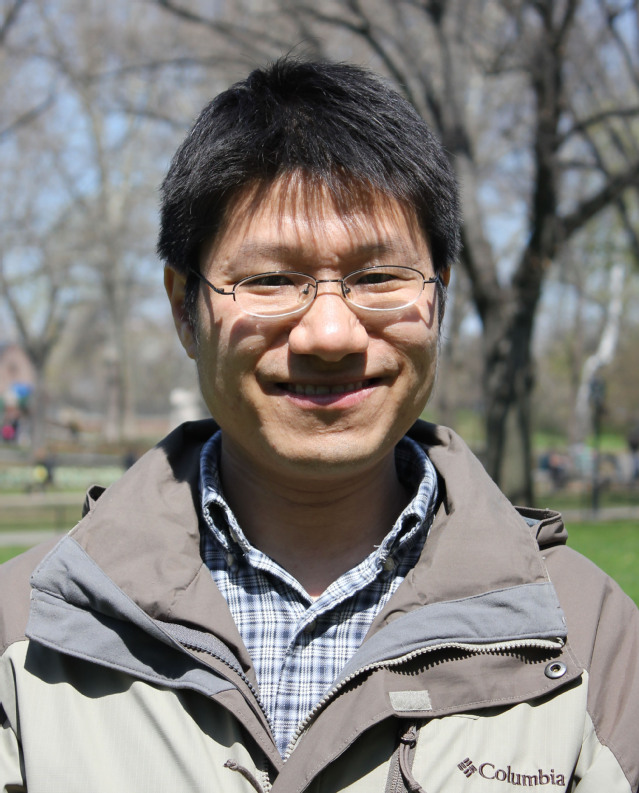高明辉
电话:0451-86402027 Email:gaominghui@hit.edu.cn,gaominghui@hotmail.com,gaom@mskcc.org 研究领域: |
|
| | |
工作背景
2009年-2010年 北京生命科学研究所 博士后研究员
2010年-2018年 美国纪念斯隆凯瑟琳癌症中心历任Research Fellow, Research Scholar, Research Associate
教育背景
2000年-2004年 山东师范大学 生物科学 学士
2004年-2009年 中国农业大学 微生物学 博士
2005年-2009年 北京生命科学研究所 联合培养 博士
学术活动
国际权威SCI学术期刊特约审稿人:
Autophagy, BMC cell biology, Biofactors, Acta Biochimica et Biophysica Sinica, Acta Pharmacologica Sinica Protein & Cell, Cytotechnology, Cell Journal, Apoptosis, Cell Physiology and Biochem, Cell Stress and Chaperones, Cell tissues organs, Cellular and Molecular Biology Letters, Journal of Cell Science, Leukemia, Molecular and celluar biochemistry, Toxicology in vitro
研究兴趣
程序性细胞死亡(Programmed cell death)在多细胞生物生长发育,维持内环境稳定和平衡方面发挥着至关重要的作用。程序性细胞死亡的异常往往会导致癌症等一系列的疾病。本实验室将综合细胞生物学、生物化学、分子生物学、生物信息学和小鼠模型等实验技术围绕程序性细胞死亡及其相关的人类疾病开展研究。具体研究方向如下:
1.铁坏死(ferroptosis)的分子机制
铁坏死最初是由人工合成的小分子化合物erastin诱导的一种独特的细胞死亡形式。分子机制上,不同于细胞凋亡和RIPK3依赖的程序性细胞坏死,铁坏死依赖于细胞内的铁离子和活性氧(reactive oxygen species, ROS)。研究发现,erastin抑制细胞膜上的光氨酸/谷氨酸转运蛋白的活性,进而抑制细胞对光氨酸的吸收,致使细胞无法合成谷胱甘肽,进而导致细胞无法维持氧化还原水平的平衡,最终导致细胞死亡。尽管铁坏死与很多疾病都密切相关,但是我们对铁坏死分子机制和生物学功能还知之甚少。我们将主要集中于铁坏死的分子机制方面的研究,同时利用对铁坏死分子机制及其在疾病发生中的研究,探索相关疾病的新的治疗方案。
2.自嗜对程序性细胞死亡的调控
细胞自噬是一种进化上非常保守的降解途径。自噬作用可帮助细胞清除废物和异物,抑制细胞死亡的发生,促进细胞存活。但是,在某些情况下,自嗜也能够促进程序性细胞死亡的进程,我们最近发现自嗜能够通过调节铁代谢来促进铁坏死,但其机制还非常不清楚。我们将对这些问题进一步深入研究。
3.肿瘤细胞代谢调控
肿瘤细胞需要获得更多地营养来满足其细胞旺盛的分裂和生长能力,然而肿瘤细胞往往面临的营养缺乏的肿瘤微环境。肿瘤细胞通过改变其代谢途径来满足其高速分裂和生长所需要的营养和能量。我们主要关注肿瘤细胞氨基酸代谢的调控机制。
代表性著作
Gao M#, Monian P, Pan Q, Wei Zhang W, Xiang J, Jiang X#.Ferroptosis is an autophagic cell death process.Cell Research 2016 26(9):1021-32 (#Co-corresponding authors,IF: 15.606, Citation: 28)
Gao M, Monian P, Jiang X. Metabolism and Iron Signaling in Ferroptotic Cell Death.Oncotarget 2015 6(34):35145-6. (IF: 5.168, Citation: 3)
Gao M, Monian P, Quadri N, Ramasamy R, Jiang X. Glutaminolysis and Transferrin Regulate Ferroptosis.Molecular Cell. 2015 59(2):298-308. (IF: 14.714, Citation: 56)
Gao M, Wang X, Wang D, Xu F, Ding X, Zhang Z, Bi D, Cheng YT, Chen S, Li X, Zhang Y. Regulation of cell death and innate immunity by two receptor-like kinases in Arabidopsis.Cell Host & Microbe(2009) 6: 34-44 (highlighted byNature China,IF: 14.946, Citation: 200)
Gao M*, Liu J*, Bi D, Zhang Z, Cheng F, Chen S, Zhang Y.MEKK1, MKK1/MKK2 and MPK4 function together in a mitogen-activated protein kinase cascade to regulate innate immunity in plants.Cell Research(2008)18:1190–1198 (* co-first authors)(Cover Story) (IF:15.606, Citation: 218)
Zhang Z, Liu Y, Huang H,Gao M, Wu D, Kong Q, and Zhang Y. Sensing the disruption of a MAP kinase cascade by an NLR protein through a MAP kinase substrate.EMBO Reports 16 December 2016, online(IF: 8.568, Citation: 2)
Bradbury M, Kim S, Zhang L, Ma K, Riegman M, Chen F, Ingold I, Conrad M, Turker M,Gao M, Jiang X, Monette S, Mohan P, Gonen M, Zanzonico P, Quinn T, Wiesner U, Overholtzer M. Ultrasmall Nanoparticles Induce Ferroptosis of Nutrient-Deprived Cancer Cells and Suppress Tumor Growth.Nature Nanotechnology 2016(IF: 38.986,Citation: 27)
Sun T, Zhang Q,Gao M, Zhang Y.Regulation of SOBIR1 accumulation and activation of defense responses in bir1-1 by specific components of ER quality control.ThePlant Journal. 2014 77 (5):748-56. (IF: 5.901, Citation: 14)
Kong Q*, Qu N*,Gao M, Zhang Z, Ding X, Yang F, Li Y, Dong OX, Chen S, Li X, Zhang Y. The MEKK1-MKK1/MKK2-MPK4 kinase cascade negatively regulates immunity mediated by a mitogen-activated protein kinase kinase kinase in Arabidopsis.Plant Cell. 2012 (5):2225-36. (* co-first authors) (IF: 8.688, Citation: 96)
Zhang Z, Wu Y,Gao M, Zhang J, Kong Q, Liu Y, Ba H, Zhou J, Zhang Y. Disruption of PAMP-induced MAP kinase cascade by a Pseudomonas syringae effector activates plant immunity mediated by the NB-LRR protein SUMM2.Cell Host Microbe.2012 (3):253-63. (IF: 14.946, Citation: 147)
Zhang, Y., Xu, S., Ding, P., Wang, D., Cheng, Y., He, J.,Gao, M.,Xu, F., Li, Y., Zhu, Z., Li, X., and Zhang, Y.2010. Control of salicylic acid synthesis and systemic acquired resistance by two members of a plant-specific family of transcription factors.Proceedings of the National Academy of Sciences(track II).107(42):18220-18225. (IF: 9.661, Citation: 117)
Zhang J, Li W, Xiang T, Liu Z, Laluk K, Ding X, Zou Y,Gao M, Zhang X, Chen S, Mengiste T, Zhang Y, Zhou JM. Receptor-like cytoplasmic kinases integrate signaling from multiple plant immune receptors and are targeted by aPseudomonas.syringae.effector.Cell Host &Microbe, 2010 (4):290-301. (highlighted byCell Host & Microbe,2010) . (IF: 14.946, Citation: 384)
Monaghan J, Xu F,Gao M, Zhao Q, Palma K, Long C, Chen S, Zhang Y, Li X. Two Prp19-Like U-Box Proteins in the MOS4-Associated Complex Play Redundant Roles in Plant Innate Immunity.PLoS Pathog5(7): e1000526 (IF: 7.003, Citation:80)


